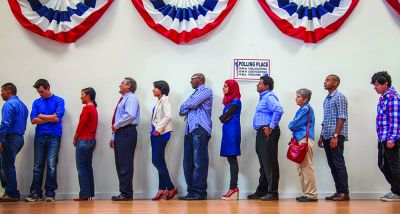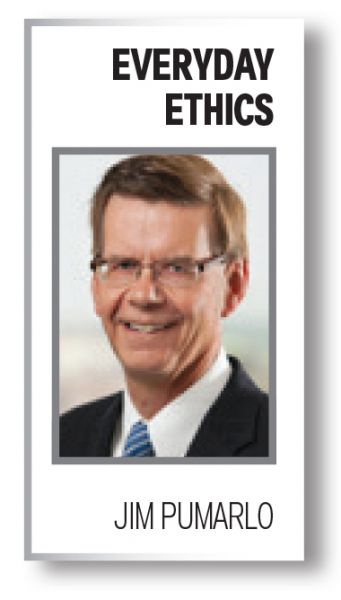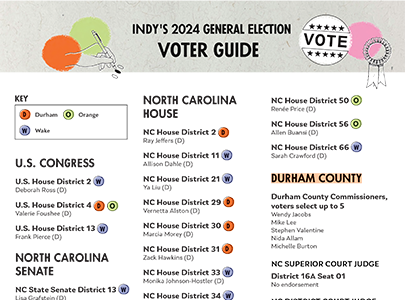Use your special insight to recommend election choices
Jim Pumarlo
Apr 1, 2022


Coverage of public affairs — recording the actions and inactions of governing bodies from local to federal levels — demands attention from newsrooms year-round. And for good reason. Elected officials regularly debate and craft public policies that affect citizens’ everyday lives.
Newsrooms provide readers a ringside seat, and often a behind-the-scenes view, into the decision-making process.
So why are newspapers increasingly hesitant to recommend individuals for elective office, especially those officials serving on local city councils, county boards and school boards?
Regular readers of my column know my passion for vibrant editorial pages. I firmly believe that vibrant editorials are at the heart of vibrant communities. It’s time to once again encourage newsrooms to take that final step in their election coverage: Endorse those individuals you believe will best represent and advance the interests of your community. I consider endorsements among the highest calling in a newspaper’s role as government watchdog.
The general election is months away. Now is a perfect time to start the internal discussion to design and implement a methodical and logical process for offering endorsements. It’s easier than you may think.
I’m always perplexed by editors and publishers who shy away from recommending ballot choices, especially those newspapers that regularly take strong stances on advising decision-makers on a particular course of action. For one community, it might be a city council’s deliberations on whether to offer tax incentives for a big-box retail development. For another, it’s a school board debating whether to close a school and reconfiguring grade levels. On a state legislative level, editors routinely weigh in on tax, health care, public safety, social justice, transportation and myriad other public policies.
If the newspaper as a community institution advocates for or against a position taken by an elected body, why not advance equally strong convictions about the people who ultimately will make those decisions?
Newspapers that excel in elections coverage offer a continuum of reports beginning with candidate announcements. Reporters quiz individuals on a variety of issues, then follow with a critical eye their actions once in office. Do candidates stay true to course, or do unexpected circumstances prompt a change of heart in their votes? In a nutshell, the newspaper is a clearinghouse of information and has particular insight on the candidates and the dynamics behind their votes. So why not share that perspective with readers?
Many newspapers find it relatively painless to weigh in on the strengths and shortcomings of, say, national or federal candidates, even candidates seeking elective office at a state or provincial level. It's quite the opposite when recommending individuals for the local school board or city or municipal government. Yet these races are the most important for community newspapers to address in news profiles and endorsements.
Endorsements in local races clearly are the most challenging, often complicated by personal relationships that candidates might have with the publisher or other key staff members. Here’s one blueprint to navigate a path that may appear to be filled with minefields.
As a first step, brainstorm the priority concerns in each race. Solicit ideas from your entire newspaper family, as well as key community members. These issues will be the basis for candidate interviews, and their responses will provide a framework for endorsements.
Then evaluate candidate answers on specific public policies and how they align with community interests. Focus on the facts and avoid straying into personalities.
If you’re still hesitant to endorse, consider this strategy. Frame the editorial outlining what the newspaper identifies as the key issues in a race — and where you stand on these points for the betterment of your community. Then encourage readers to vote for the candidates who are in sync with those stances. You have not identified specific candidates, but your message allows readers to connect the dots.
As always, allow readers the opportunity to deliberate your recommendations. Readers still might challenge your practice of “telling us who to vote for” — their words. But they will be doubly upset if you don’t give them the chance to debate the reasons behind your endorsements.
Letters are the lifeblood of an editorial page. Nothing is more satisfying than an editor opening up the newspaper to a lively exchange of opinions. Take steps now to ensure that your voice is part of the conversation this election season.
Jim Pumarlo is former editor of the Red Wing (Minnesota) Republican Eagle. He writes, speaks and provides training on community newsroom success strategies. He is author of “Journalism Primer: A Guide to Community News Coverage,” “Votes and Quotes: A Guide to Outstanding Election Coverage” and “Bad News and Good Judgment: A Guide to Reporting on Sensitive Issues in Small-Town Newspapers.” He can be reached at www.pumarlo.com and welcomes comments and questions at jim@pumarlo.com.










